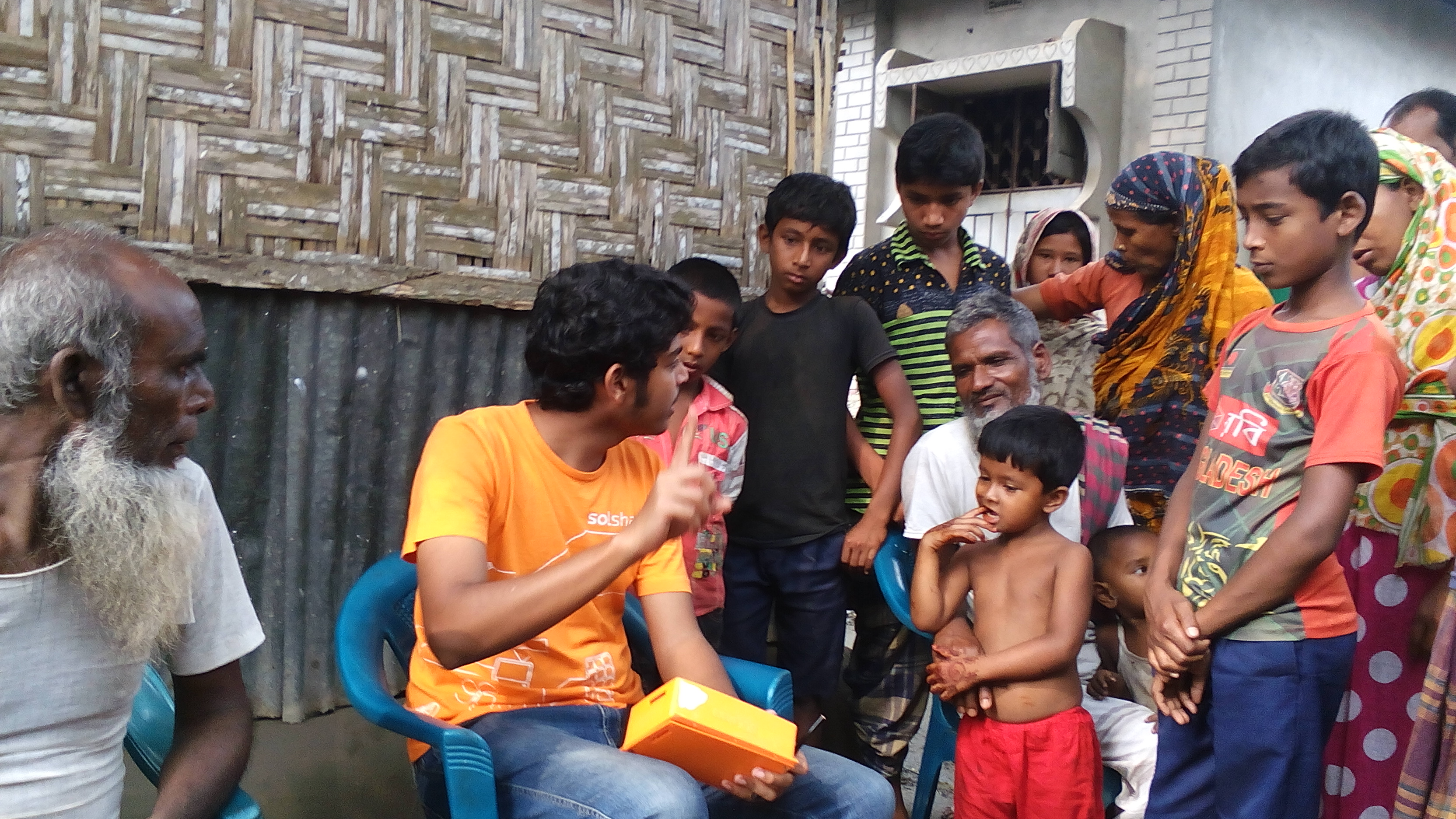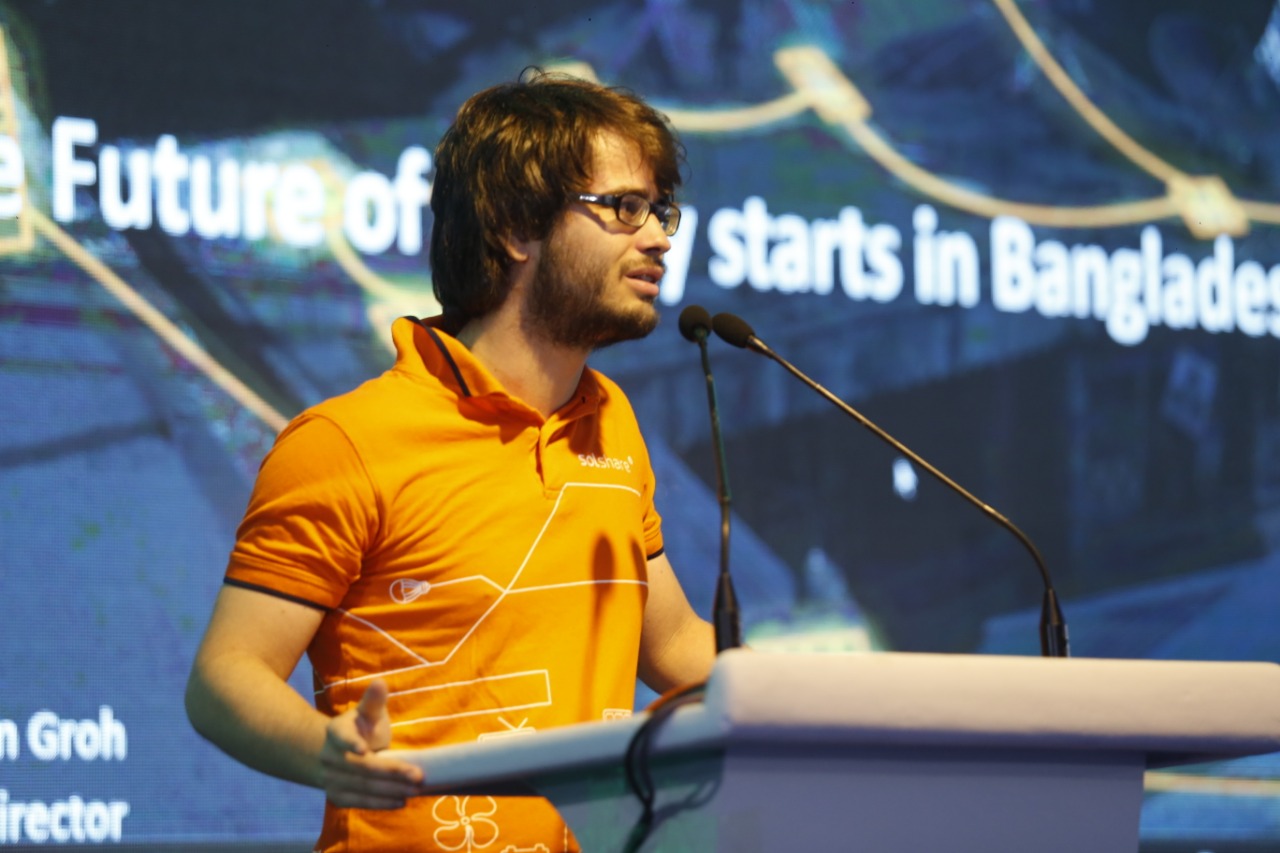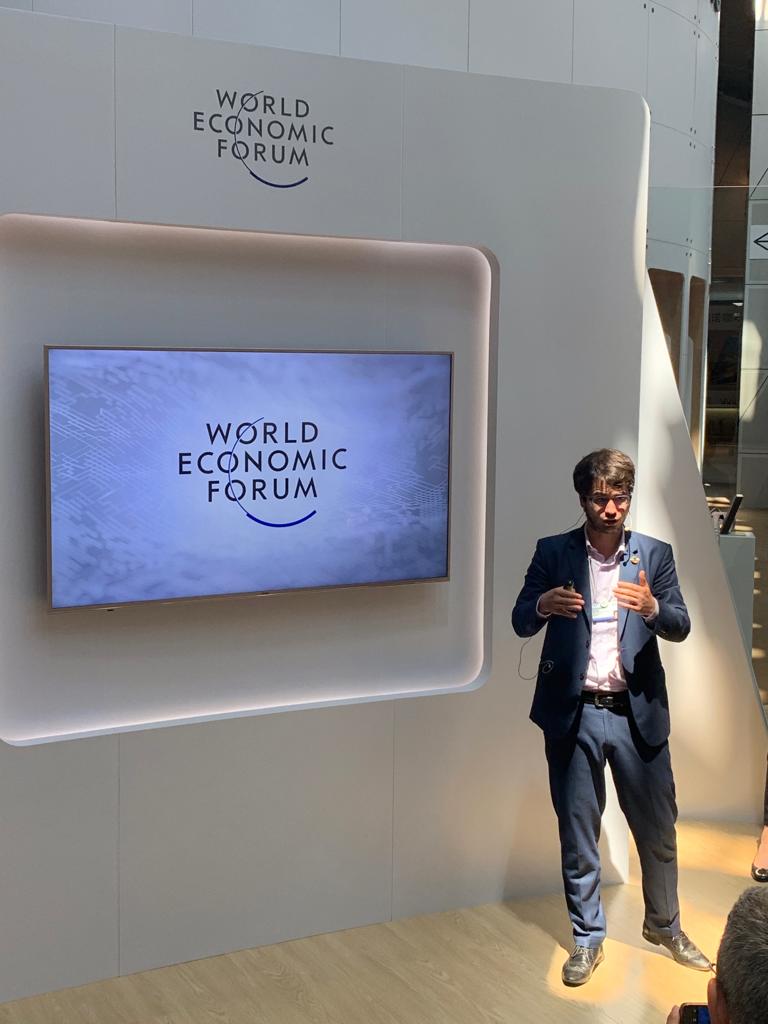Interview with Dr. Sebastian Groh (SOLshare): Seeking Impact Investment – Experiences from a Social Entrepreneur

In this post, we highlight an interview from Siemens Stiftung’s recent report ‘How Digital Solutions May Enhance Social Financing’ with Dr. Sebastian Groh, Founder and Managing Director of SOLshare.
SIEMENS STIFTUNG: Sebastian, you have been operating for a few years now. In which stage are you right now with SOLshare?
SEBASTIAN: I think we are still at an early stage even though we have already been doing this for five years. We are still trying to figure out the precise business model in addition to the product. Regarding our size, we currently have about sixty people working full time at SOLshare.
SIEMENS STIFTUNG: How are you currently financed?
SEBASTIAN: We have a hybrid form of financing. Mainly we have an equity route, with a first round of venture capital funding of USD $1.7 million. We have received grants as well as monetary award prizes of an even higher amount.
 One of SOLshare’s ambassadors explaining how to leverage SOLbox for energy sharing in their community.
One of SOLshare’s ambassadors explaining how to leverage SOLbox for energy sharing in their community.
SIEMENS STIFTUNG: How did you find your investors?
SEBASTIAN: We have a mix of three major investors. Two of them are what you would call CVCs (Corporate-Venture Capital). They have a high-risk appetite but, in the case that it is a strategic fit, financial returns don’t have to occur in the short term. We are very much at the forefront of innovation in what is called “peer-to-peer energy exchange”, which is something that is very much in trend. Many people are working on finding viable models, and we have been one of the very early movers. That has been the point that our investors like in addition to the social impact that we create, but it is not their main focus.
Our third investor is a social impact investor, for whom the social impact is much more important and consequently he has more patience. To close these deals, it was a lot about exposure, winning competitions and being in the media and so forth. That’s one reason why we have such a strong brand. But also through conferences, usually sector-specific conferences on energy access. Finally, we also actively requested to be connected to some investors and then you spin that further.
SIEMENS STIFTUNG: How do you prepare your pitch documents if you target so many different types of funders?
SEBASTIAN: We go in very different costumes you could almost say. If I talk to a development finance institution or to a foundation or to a corporate venture, we have different presentations for each audience, so it’s very different.
SIEMENS STIFTUNG: What would you say are the main challenges as a social enterprise when it comes to searching for financing?
SEBASTIAN: I think the main catch is the understanding gap. So, we are in the energy sector, which is an extremely political field. There can be strong intervention from the government. You are at times exposed to competition that is heavily subsidized, like a national grid, for instance. To explain this to the investors and make this a compelling case is a daunting task. And then there is another gap in understanding. Two of our investors are European, so it takes time to help them understand what rural realities and local economies look like. Another extremely difficult challenge for us relates to Bangladesh as a country. The risk premium that is added on Bangladesh is massive, which means the valuation goes down significantly. The ease of doing business in the country is very poor and that means you must first pitch the country before you can even start pitching your business. That of course takes a lot of time and you are not given a lot of time. Lastly, our business model is extremely complex, and that may be our fault, but if you want to be a tech pioneer creating social impact you nearly can’t do anything simply. Not all investors necessarily have the patience to go into that.
SIEMENS STIFTUNG: What type of information are investors typically interested in and how appropriate do you think that this is regarding your ability to show them that you are the right investment case?
SEBASTIAN: In a nutshell, our experience with social impact investors is that they take longer in their decision making, they ask more details and give less money compared to other types of investors. So that is the first observation in our last round. We even had made the experience that an investor jumped off the very last day before closing out on the deal because they realized that there was also a Venture Capitalist (VC) coming in and that they would have less influence.
 Brand recognition can play an important part when seeking impact investment capital.
Brand recognition can play an important part when seeking impact investment capital.
–
Many social impact investors are not clear about what social impact creation means and what it requires and then they expect financial returns that are not much different from a VC. So, where is the patience and where is the social part? Our experience taught us: If I count on social investors only, I won’t survive. If social impact investors don’t have the risk appetite, they will not make any breakthroughs in social impact. If they just want to finance what they know, then not much will change and I think that is a huge gap.
SIEMENS STIFTUNG: What did you do then?
SEBASTIAN: We are fortunate to have a very good set of investors in place now, but it took time to identify them. We had to go to the VCs and were lucky that they were so interested in our technology that they came on board even though we were actually too early stage. The problem is that I am paying the bill because now all the family offices and all the social impact investors are not interested anymore. Because they fear that if they support us with philanthropic capital, a part of it will go into the pockets of the VCs. The only “free” money (grants) we can get is from Financial Development Institutions.
SIEMENS STIFTUNG: Why do you still need this “free money”?
SEBASTIAN: The complexity of our business model is too high. We are trying to solve a problem that is very much systemic. Addressing this through a platform is extremely capital intensive. There is still research and development investment heavily needed which requires grants.
SIEMENS STIFTUNG: What do you think is needed to improve the matchmaking and the due diligence processes between social impact investors and social enterprises?
 Sebastian highlights the advantages of energy security at a World Economic Forum speaking engagement.
Sebastian highlights the advantages of energy security at a World Economic Forum speaking engagement.
SEBASTIAN: I think social enterprises need to be supported more because, if we talk about losing time in the matchmaking and the due diligence process, our time is more precious than the investors’ time because I would fail more quickly. I think the tables have to be turned more often and the roles both have should be much more equal than they currently are where the entrepreneur is inferior to investors. That is a very wrong set up in the first place and that’s not how we will create social impact. I see a lot of responsibility on the investor side to cut off the conversations much quicker if they feel like there is a mismatch. Digital solutions can have an effective pre-filter on ticket size and focus, guiding matchmaking in a much more targeted way. Video pitches can also be distributed digitally right away, cutting costs of going out and telling the same story again and again.
SIEMENS STIFTUNG: Are you using some type of technology solutions for fundraising?
SEBASTIAN: We have a digital data “room” where I upload documents and send them to the investors. Every investor can then sign in with his own login credentials and I can see when and how often they look at the things. That helps me a little bit to understand what they’re looking at or if they’re actually looking at something.
In case they are not so responsive, I can check to see what’s happening. In terms of matchmaking, we have been in a couple of accelerator programs which were very effective. One program called “Free Electrons” is a global accelerator of very large energy utilities, where utilities are matched up with startups. That wasn’t targeted at investment directly, but rather to set up joint pilots with the possibility of an investment happening. That’s what happened in our case. Basically, they gather a range of entrepreneurs and a range of investors in the same location and lock them in a room until something comes out of it. That’s the methodology, which has worked quite well.
SIEMENS STIFTUNG: Would it be an option that such a digital data “room” would be provided by a platform that helps to bundle different investors and different social enterprises and to standardize such a process?
SEBASTIAN: I think so. It depends on the design of the data rooms. The investor in our virtual room has to write a sort of profile which is then put to the investment committee. The structure of our data room already follows that expose and then it’s less work and it moves faster. Everything is nicely chopped into pieces instead of having a business plan of thirty pages. If we would all follow the same structure, it would go faster and investors could even compare different startups based on chapters.
SIEMENS STIFTUNG: Would you have concerns regarding data privacy or data security when you think about such a solution?
SEBASTIAN: The curator would have to be a trusted entity and make sure there are strong NDAs etc. If that is the case, I think it would work.
SIEMENS STIFTUNG: Thank you, Sebastian!
Dr. Sebastian Groh is the Founder and Managing Director of SOLshare, a peer-to-peer (P2P) solar energy exchange platform, mainly operating in Bangladesh. While the electricity needs of people with a solar home system vary, SOLshare empowers them to dynamically trade electricity. By design, a typical solar home system has an excess capacity of about 30% worth USD $1 billion. Since this value is lying idle in the remote areas of Bangladesh, SOLshare has embarked to empower the local communities to tap into this vast potential. Besides that, SOLshare also takes care of an automatic settlement process through mobile money.